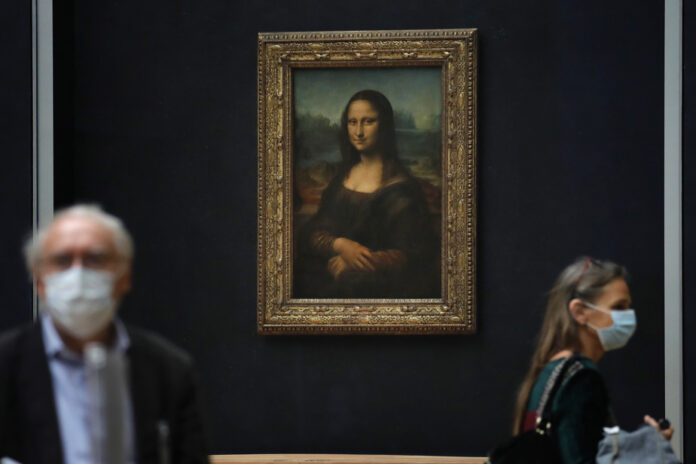(Paris) The Mona Lisa reveals new secrets. By using X-rays to examine the chemical structure of a tiny dot in the famous work of art, scientists have gained new insights into the techniques Leonardo da Vinci used to paint his groundbreaking portrait of the Woman with the Enigmatic Smile.
The study, published Wednesday in the Journal of the American Chemical Society, suggests that the famously curious, erudite and inventive Italian Renaissance master may have been in a particularly experimental mood when he began working on La Mona Lisa in the early 16th century.
The oil paint recipe that Leonardo da Vinci used as a base coat to prepare the poplar wood panel appears to have been different for the Mona Lisa, with its own distinctive chemical signature, the team of scientists and researchers have discovered. art historians in France and Great Britain.
“He was someone who loved to experiment, and each of his paintings is completely different on a technical level,” explained Victor Gonzalez, lead author of the study and a chemist at the National Center for Scientific Research (CNRS), the largest French research organization. Mr. Gonzalez has studied the chemical compositions of dozens of works by Leonardo da Vinci, Rembrandt and other artists.
“In this case, it’s interesting to see that there is actually a specific technique for the Mona Lisa base layer,” he noted in an interview with the Associated Press.
Specifically, the researchers found a rare compound, leadonacrite, in the first layer of paint. Gonzalez said the discovery confirmed for the first time what art historians had previously only hypothesized: that the artist most likely used lead oxide powder to thicken and help drying his paint as he began to work on the famous portrait exhibited at the Louvre Museum in Paris.
Carmen Bambach, a specialist in Italian art and curator at the Metropolitan Museum of Art in New York, who was not involved in the study, called the research “very exciting.” She said any new scientific understanding of Leonardo da Vinci’s painting techniques is “extremely important news for the art world and our global society as a whole.”
The discovery of plumbonacrit in The Mona Lisa attests to “Leonardo da Vinci’s passionate and constant spirit of experimentation as a painter – it’s what makes him timeless and modern,” Bambach argued by email.
The analyzed painting fragment was barely visible to the naked eye, no larger than the diameter of a human hair, and came from the upper right edge of the painting.
Scientists examined its atomic structure using X-rays in a synchrotron, a large machine that accelerates particles to almost the speed of light. This allowed them to discover the chemical composition of the grain. Plumbonacrit is a byproduct of lead oxide, allowing researchers to say with greater certainty that the painter likely used this powder in his paint recipe.
“Plumonacrite is really a fingerprint of its recipe,” Gonzalez said. This is the first time we can actually confirm it chemically. »
After Leonardo da Vinci, the Dutch master Rembrandt may have used a similar recipe when he painted in the 17th century; Gonzalez and other researchers have also previously found plumbonacrit in his work.
“It also tells us that these recipes have been passed down for centuries,” he noted. It was a very good recipe. »
Leonardo da Vinci is believed to have dissolved orange-colored lead oxide powder in linseed or walnut oil by heating the mixture to make a thicker, quicker-drying paste.
“What you will get is an oil that has a very nice golden color,” Gonzalez said. It flows more like honey. »
But the Mona Lisa – believed by the Louvre to be a portrait of Lisa Gherardini, the wife of a Florentine silk merchant – and other works by Leonardo da Vinci still have other secrets to tell.
“There’s a lot more to discover, that’s for sure. We’re barely scratching the surface,” Gonzalez said.
“What we say is just another little brick of knowledge. »

